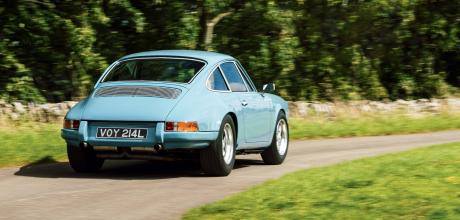1972 Porsche 911 SC Backdate build from The Hairpin Company
With an architectural approach to its design and build, this SC backdate has universal appeal, as Total 911 discovers…
Written by Kyle Fortune
Photography by Alisdair Cusick
SC BACKDATE: RETRO PERFECTION
Perfectionist’s Pursuit 911 backdate
Kyle Fortune drives a special, backdated SC build from The Hairpin Company
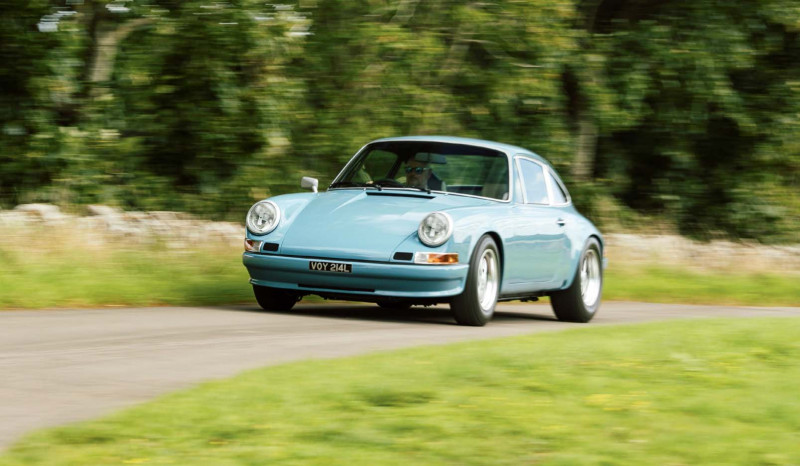
The steering wheel is often overlooked as a point of connection. Given that it’s the only thing (seat aside) you’ll constantly be in contact with while driving, it’s a bewildering state of affairs.
The best Porsche always have the best steering wheels, and that’s very apparent today. It looks sensational for starters, with its slim-holed spokes wearing the name Tactico, a brand I’ve never encountered before. I’m unlikely to ever grasp a Tactico Racing Atelier Viceroy (to give it its full name) again either, as this limited-series wheel, designed by Glen Cordle and dubbed ‘Sung’s Garage edition,’ was built in a series of just 59 examples. It presents a surface of brushed and matt-finished in black, although its back is laminated in ash. That cool touch gives it a subtle warmth that’s lacking in similarly designed, all-metal spoked alternatives. Designed with a circumference that matches the 380mm of a 2.7 RS’s wheel, the rim’s actual girth feels thicker, and is covered in a grained black leather with contrasting light stitching. In short, it’s wonderful, but then so is the rest of the car it’s attached to.

Usually, the day would start with Alisdair pointing his cameras at the car before going out for a drive. However, for reasons of holiday traffic and weather, we’re eschewing routine and starting with a drive. Even so, it’s difficult not to pause when getting in just to appreciate the details of this one-off 911. They’re complemented by countless highlights that underline this car has been built with an obsessive eye for detail, yet executed with dignified restraint.
It started life as an ’1982 911 SC, with the owner’s goal to produce a car that would heavily reference the ’72 model year – not just in relation to the driving, but also the visual purity that year delivered. A specialist in Dorset would undertake the build, directed by the car’s owner who, as a designer and architect, had a clear idea of how the car should look, feel and drive.
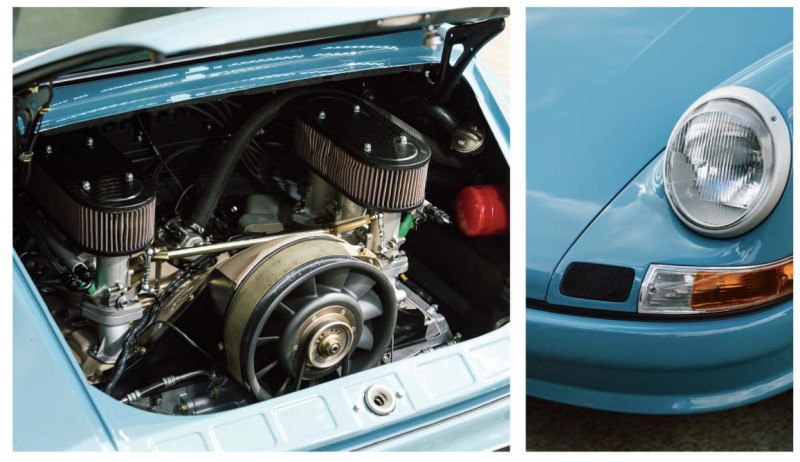
Power is comfortably more than any ’1972 911 would have produced. Similarly, the capacity of 3.5-litres is significantly greater than any production car of the time. The SC’s engine forms the basis for the conversion. It’s now a short-stroke, twin-plug, flat six bored to 3.5-litres and featuring JE Pistons, CP-Carrillo connecting rods, Borla electronic fuel-injected throttle bodies, K&N air filters, a standalone ECU, 3.2 Carrera fuel pump and a bespoke, handmade twin outlet exhaust.
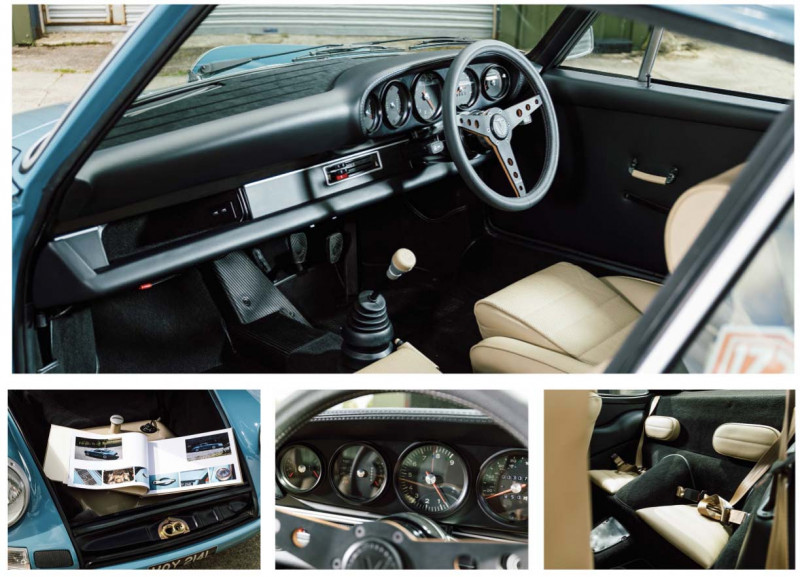
It’s shifting around 1,000kg via a five-speed 915 gearbox with an uprated clutch, as well as a Quaife ATB (Automatic Torque Biasing) 40 per cent limitedslip differential. The gearstick is topped with the same light leather as the seats, though with a crossstitched finish around its edge that not only looks good, but aids purchase with your hand as you row the unsprung 915 through its ratios.
The 915 feels authentic here. It’s a deliberate choice, too – not just for the weight advantage it brings over a later G50 gearbox, but its requirement to engage with each shift. The 915 requires patience and skill to match it with the engine’s eagerness. Not that you need to stir it too much, as the big capacity unit delivers easy performance at low revs. It makes light work of the car on British country roads, allowing any rev at any gear speed that should be required. It’s quick if you’re short-shifting, although upping the revs beyond 4,000rpm adds a wave of pace and a notable uplift in aural drama when the engine really gets on song. Its peak torque of 390Nm arrives at 4,800rpm, with its maximum 350hp produced just 600rpm before its 7,800rpm red line. You feel every one of those hp too, yet for all its ferocious potential pace and glorious sounds emanating from that hand-made exhaust there’s also the possibility of real civility, making this a car that can be enjoyed whatever your goals with it, be that a lolloping continental tour or a winding country road.
That’s true, too, of the chassis. It utilises original Bilstein dampers, with a wheel and tyre combination that was the result of exhaustive tests to get right: a track was hired and around 15 differing wheel and tyre options tried before settling on the specification here. The 15-inch Fuchs wear 185/70 R15 front and 225/65 R15 tyres. These enable the retention of the narrow-bodied look the owner desired, but filling the arches very purposefully indeed. There’s huge grip from them, and mighty traction too, with the combination of those fully rebuilt dampers and the ample tyre sidewall giving the car a fluid composure over what passes for roads in the UK these days.
This car flows beautifully. There’s plenty of feel through that wonderful steering wheel, while the brakes – 300mm discs up front and 280mm rear, grasped by Ferodo fast road pads via Carbon 12 Racing RSR calipers with six pistons on the front axle and four on the rear – produce stopping power that’s more than an equal for the performance on offer.
The temptation is to stay out and enjoy the car for longer, but those memory cards need filling for visuals, so we head back to The Hairpin Company where the car’s currently up for sale. Within moments of seeing it, and even more so after driving it, I’m at a loss as to why the owner would part with it, but Neil Dickens from The Hairpin Company explains that a huge part of the enjoyment for the owner was the curation and process, and there’s another project in the offing. He doesn’t live in every building he designs, either. Still, one man’s loss… as they say. I’d be only too happy to gain because it’s been created with an attention to detail that really is next level, yet is executed in a manner that’s wonderfully understated.
The original shell had a sunroof fitted, and during the process of deleting it the opportunity was taken to add a little curvature to the roof. You’d be hard pushed to spot it in isolation, but it’s there. That’s also true of the slimmed rain gutters, which add a delicacy to the car’s lines that underlines the exacting attention to detail that defines the entire car.
Those subtleties reveal themselves the more you look at it, too. It’s little wonder that the build time for this car exceeded 750 hours, because the fit and finish throughout is exceptional. You only need to look at the panel gaps around the doors to understand that, but pick any area and the owner’s desire to improve and perfect gently reveal themselves. The subtle, hand-rolled shaping of the wheel arches front and rear is unique, with the aluminium rear engine cover coming from a ’72 car. Under it sits an S/T-style rear bumper in glass fibre, with the front one created in steel. Within that front bumper there’s an opening, its width aping that of the intake on the bonnet fore of the windscreen. Within it is the same mesh that fills the horn grilles, and these alone took a week to produce.
Wheels and indicator surrounds aside there’s a notable absence of brightwork. The owner’s dislike of chrome has resulted in judicious use of Cerakote. This ceramic coating creates a matt finish that not only looks fantastic, but adds a tactility to touch points, too. It’s been applied on the headlight surrounds, door handles, engine cover slats, window trim and in the interior, where, similarly, it replaces trim elements that would more usually be chrome. Additionally, it features on the bespoke light pull, the underside of the gearknob and ignition surround, creating touch points with a pleasingly warm feel.
That matt trim works very well with the exterior colour choice, which is a Mercedes-Benz hue from the 1950s. As many as 26 different colours were shortlisted, among which seven were blues, before the vintage Glasurit milky grey/blue colour was settled upon. That was only chosen after the owner explored the potential choice by undertaking an 11-hour round-trip to visit the sole car in the UK that could be found finished in the same shade.
That lengthy confirmation drive to be sure was well worth it, because on the 911 it looks wonderful, and is very much in keeping with the unique, but subtly enhanced, puristic theme of the build. That purist look extends as far as removing any badging, with neither the engine cover or bonnet wearing Porsche branding. That’s true too inside, where there’s no Porsche crest visible anywhere, with the exception of the key-ring.
Not that you’d ever be left in any doubt as to what you’re sitting in, with the five dials ahead of you. The 7,800rpm-marked rev-counter is positioned so that maximum is tantalisingly pointing straight ahead. The redline is exactly that: a line, thin and neat, opposed to a block following the number. The instruments, like every element inside, exhibit the owner’s exacting requirements. They were sent to Poland to be stripped and rebuilt, the original clock discarded for a volt gauge with a change-up light alongside, and this now doubles up as a cylinder head heat warning light.
In keeping with the owner’s love of tactility and authenticity, the Nappa leather was sent to Germany to be stamped by the only trimmer with the correct die press to create the 1970’s basket-weave finish. The cream colour contrasts with the otherwise black leather and Alcantara used inside. The instrument surround and dashboard is finished in black, with the dash top grooved and finished in Alcantara to reduce reflections. It’s difficult not to run your hand along it, such is its tactility. The simplicity of the dashboard is enhanced by the removal of superfluous details such as the ashtray, glovebox lid and stereo.
Entertainment (or more truthfully sat-nav and comms, as entertainment comes via the car itself) is enabled by the magnetic mounting of your smartphone to the centre dashboard, with USB connections for power secreted away in the Perlonlined glovebox recess.
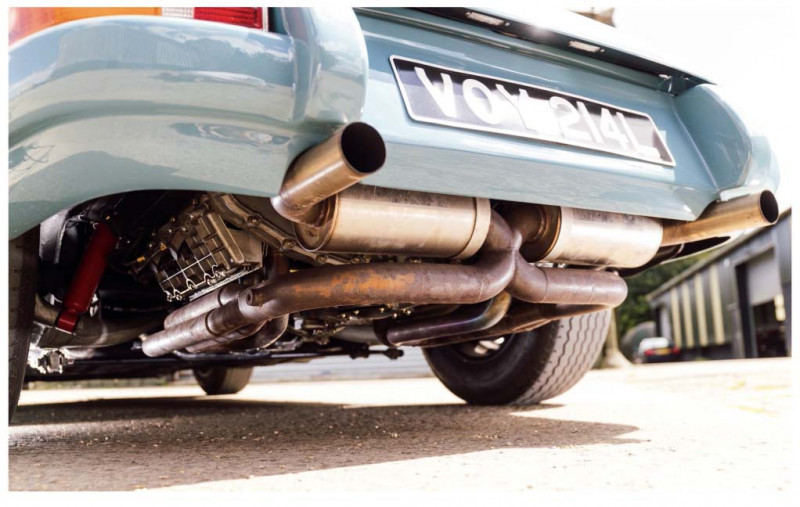
The rear seating is retained, although instead of ‘seats’ with folding backs there are simple upholstered pads and belts, which are in keeping with the pared-back interior. Door cards are unadorned, with a leather pull release and a basic handle, while the switches for the electric windows are located under the dash. Opening the bonnet reveals no compromises in the attention to detail, with the high-capacity fuel tank being painted in the same cream of the interior leather, and the top mounts for the front suspension spanned with a strut brace.
It’s a fascinating build, specified with an expert eye for detail and respectful nod to originality that results in something that’s genuinely unique. It achieves that individuality with a subtlety that’s so well considered that it elevates the whole to a level seldom apparent in such cars. That it does so without being so personal to the builder is testament to both their vision and skill in curating its specification. Visually it’s hugely appealing, but that’s backed with a drive that’s equally engaging and exciting.
Impressive as all that is, the defining element is its tactility. This a car that mainlines on feel. That’s apparent everywhere, and notably so with the wheel. The owner did have ideas of keeping it prior to consignment for sale, but to do so would rob the car’s next owner of that vital connection, and a detail that ultimately defines and dictates the entire car. If I could, I’d be buying it, and would intend on putting a good number more miles on the odometer, because otherwise it’s pretty much as good as it gets.
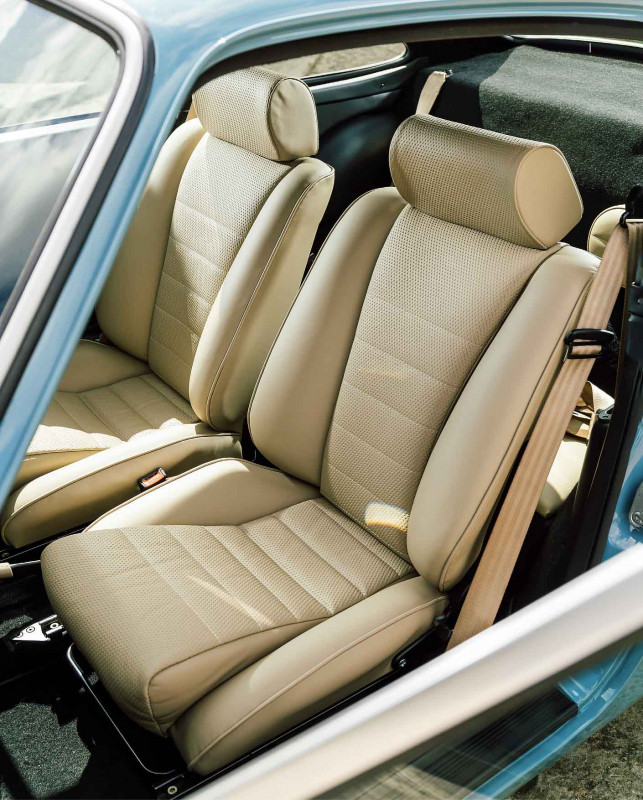
LEFT A limited-edition steering wheel makes a dramatic statement on the customised dashboard.
BELOW LEFT Lifting the bonnet reveals the high-capacity fuel tank.
MIDDLE LEFT Nappa leather covers the dashboard, with Alcantara used elsewhere to reduce reflections.
FAR LEFT The rear seating is unfussy, in keeping with the rest of the car’s design.
FACING PAGE The cream Nappa leather used for the driver and passenger seats features a period-correct basket-weave finish.
ABOVE The sunroof that was present in the original body shell was removed to give more of a curve to the roof.
FAR LEFT The engine is a 3.5-litre flat six that generates more power than the equivalent 911 from 1972.
LEFT The grey/blue colour of the car is a Mercedes-Benz paint scheme that originates from the 1950s.
BELOW A bespoke, twin outlet exhaust is just one of the many ways this SC backdate has been customised by its owner.
“Upping the revs beyond 4,000rpm adds a wave of pace and an uplift in aural drama”
Total 911 verdict
A beautifully considered and curated build that appeals to us on every single level. Execution of the neat, unique details; simplicity; purity and engagement. Needs another mirror; we’d add a Porsche badge on the bonnet; the 915 gearbox requires patience at times.


